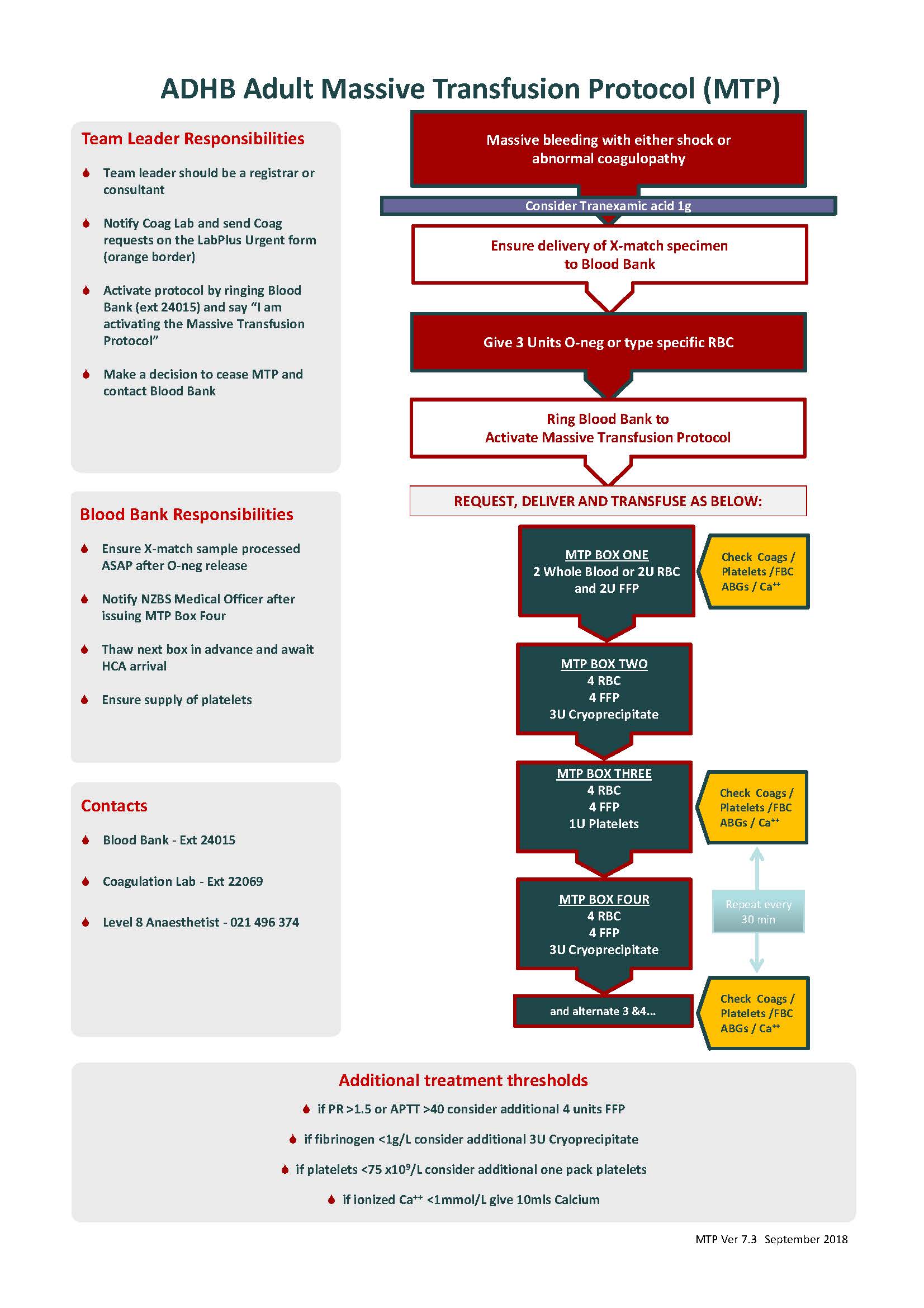

Studies have shown improved survival using higher ratio of FFP to RBC transfusion as compared to the conventional approach. Aggressive management of injury-associated coagulopathy has been promoted in recent years in massive blood loss. Physicians involved in managing war injuries noticed that early administration of fresh frozen plasma (FFP) during massive transfusion decreased coagulopathy and improved survival in patients. Rationale for massive transfusion protocol A protocol based empirical replacement of coagulation factors is, therefore, recommended in massive blood losses. However in situations of large blood losses, the laboratory test based approach for replacement of coagulation factors may lead to a delay in the recognition and treatment of a rapidly developing coagulopathy as turnaround times for most laboratory tests is long. Therefore, it is generally recommended that replacement of blood components be guided by laboratory tests. In a study on surgical patients with normal coagulation factors, haemostatically critical levels of platelets (50 × 10 3/mm 3), fibrinogen (1.0 g/L) and coagulation factor II, V and VII were reached at blood loss >200%, 150% and 200% respectively. Also, plasma substitutes may have direct effects on the coagulation system particularly if used in volumes >1.5 L. However, with increasing loss, dilutional anaemia and later dilutional coagulopathy sets in. Mild to moderate blood loss can be managed with crystalloid or colloid infusions alone. Anaesthesiologists and other acute care physicians should, therefore, be well versed in the current concepts in the management of massive blood loss and transfusion.īlood component loss during massive blood loss is best managed by following the massive transfusion protocol (MTP).

In an analysis of haemorrhage claims in the United States Anaesthesia Closed Claims Project database for claims between 19, the authors note that anaesthesia care was more often assessed as less than appropriate. Nonfatal complications such as respiratory and renal, were seen in more than 50% of patients when more than 5 units were transfused. However, it was associated with high mortality as compared to patients without transfusion. American College of Surgeons National Surgical Quality Improvement Program database over 3 years revealed very low incidence of massive transfusion. Timely recognition and efficient management are vital for successful outcomes after major blood loss. Massive blood loss is encountered in various situations like polytrauma, major surgeries, gastrointestinal bleeds, obstetric haemorrhage, etc.


 0 kommentar(er)
0 kommentar(er)
